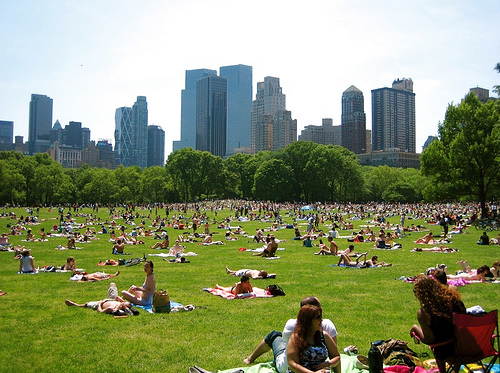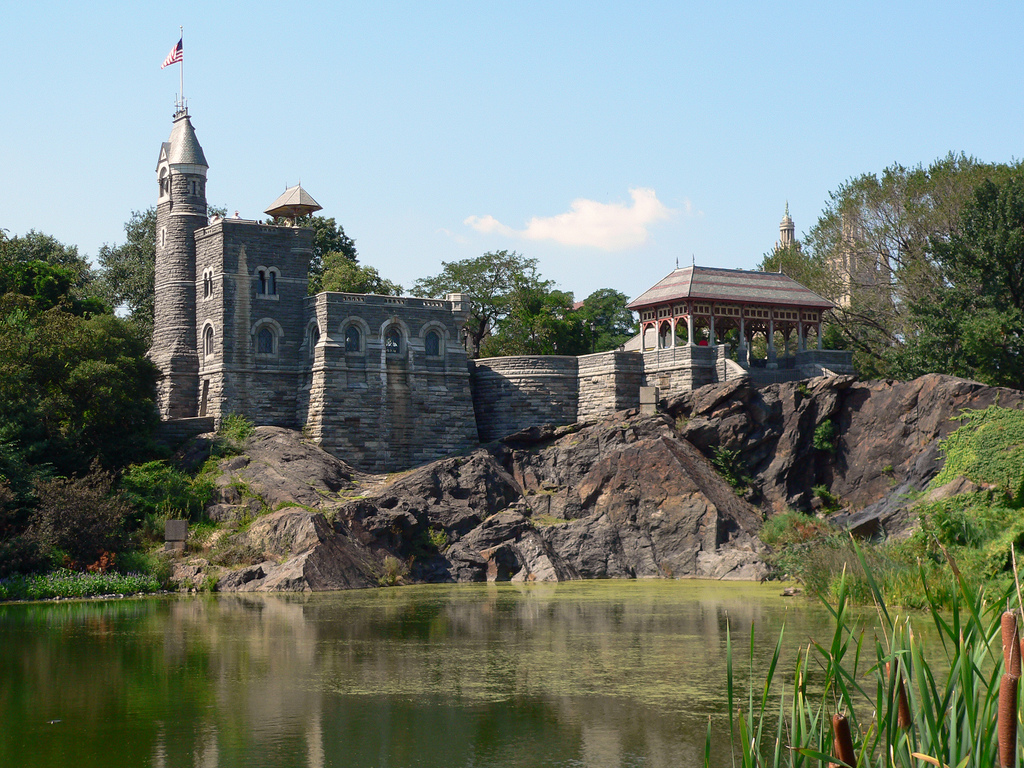Central Park is often called the green lung of New York. This green park in the heart of Manhattan is neither the largest nor the most original in the largest American city.
However, it has always lived close to American history, adapting to the evolution of lifestyles and surviving the hardest crises, it has remained this cherished space that 25 million New Yorkers and tourists visit every year.
Central Park is a huge rectangle 2.5 miles long and 0.5 miles wide. It is located in the center of the island of Manhattan. It is bounded by Fifth Avenue to the east and Eighth Avenue to the west, 59th Street to the south, and 110th Street to the north. Its 341 hectares of lawns, flowerbeds, woods, and bodies of water constitute a salutary anomaly in a landscape invaded by cement and skyscraper windows.
Sheep Meadow
As shown in the picture, Sheep Meadow is the place where New Yorkers come to relax, eat a picnic or sunbathe. From Sheep Meadow, you can admire the buildings while being far from the hubbub of the city.
If you want to lounge on the lawn, it is located between 66th and 69th Street.
Belvedere Castle
The Vista Rock is the second highest point of Central Park, it is a rock dating from more than 450 million years, it is in this place that Calvert Vaux and Jacob Wrey Mould chose to build the reproduction of a Scottish castle of neogothic type.
Work began in 1869 and the building was constructed with Manhattan shale. Today it is used by the New York Weather Observatory.
To admire the Belvedere Castle, you have to enter 79th Street.
Jacqueline Kennedy Onassis Reservoir

Previously called the central lake of Central Park, it is in 1994 that it inherited the name of Jacky Kennedy. Since then, many joggers come to wear out their sneakers around this small lake which is a little less than 2.7km in diameter.
To come and walk around the Jacqueline Kennedy Onassis Reservoir you will have to enter Central Park at 85th to 96th street.
The history of Central Park
In 1853, as part of the city’s planning process, the city of New York purchased several pieces of land to create large parks. The one in Manhattan was an overgrown and swampy area that cost the city 5 million dollars. The landscaping work was entrusted to the American landscape designers Frederick Law Olmsted and Calvert Vaux. This was a long and difficult project.
Swamps had to be filled in, more than 3 million cubic meters of earth had to be moved, huge boulders had to be blasted, rivers had to be redesigned, and lawns, flowers, and more than 500,000 trees had to be planted. It was not until 1873 that the entire park was completed.
Since that time, Central Park has lived in the interest of the city’s leaders and residents. The advent of the automobile encouraged New Yorkers to move away from the city to the Atlantic coast or other natural areas near New York.
The Great Depression forced City Hall to cut back on certain expenditures. During these periods, maintenance of the park was minimal, and often the homeless moved in.
Fortunately “after the rain comes the good weather”. In 1934, Mayor Fiorello LaGuardia became interested in the park again. He allocated funds and entrusted its rehabilitation to the urban planner Robert Moses. Central Park was designed as a new space for sports and recreation.
But this effort came to a halt in 1960 when Robert Moses died. Central Park fell back into a phase of decline and even became one of the most dangerous places in New York. This did not prevent concerts from being given there by the New York Philharmonic Orchestra, the Metropolitan Opera, or stars like Barbara Streisand or the duo Simon and Garfunkel.
In 1980, with the creation of the Central Park Conservancy, the park regained interest. Volunteers maintained the park and finally, the municipality granted it again important funds. Central Park was soon restored to its original appearance, and security is maintained day and night.
New green spaces were created such as the Great Lawn, in addition to the historical spaces such as lakes, gardens, museums, and waterways around which one can walk or jog.
Photo credit (Great Lawn): Arthur




